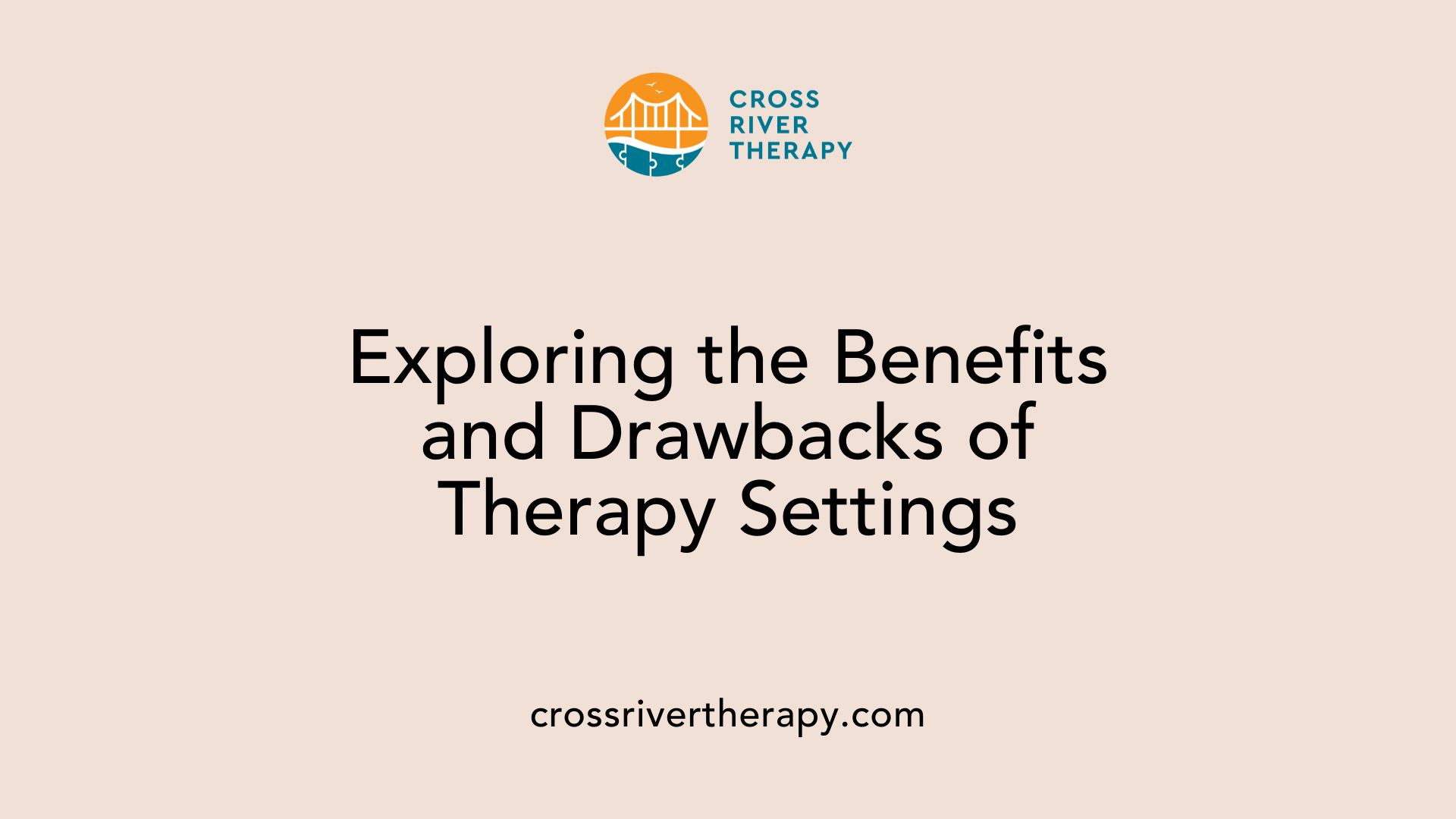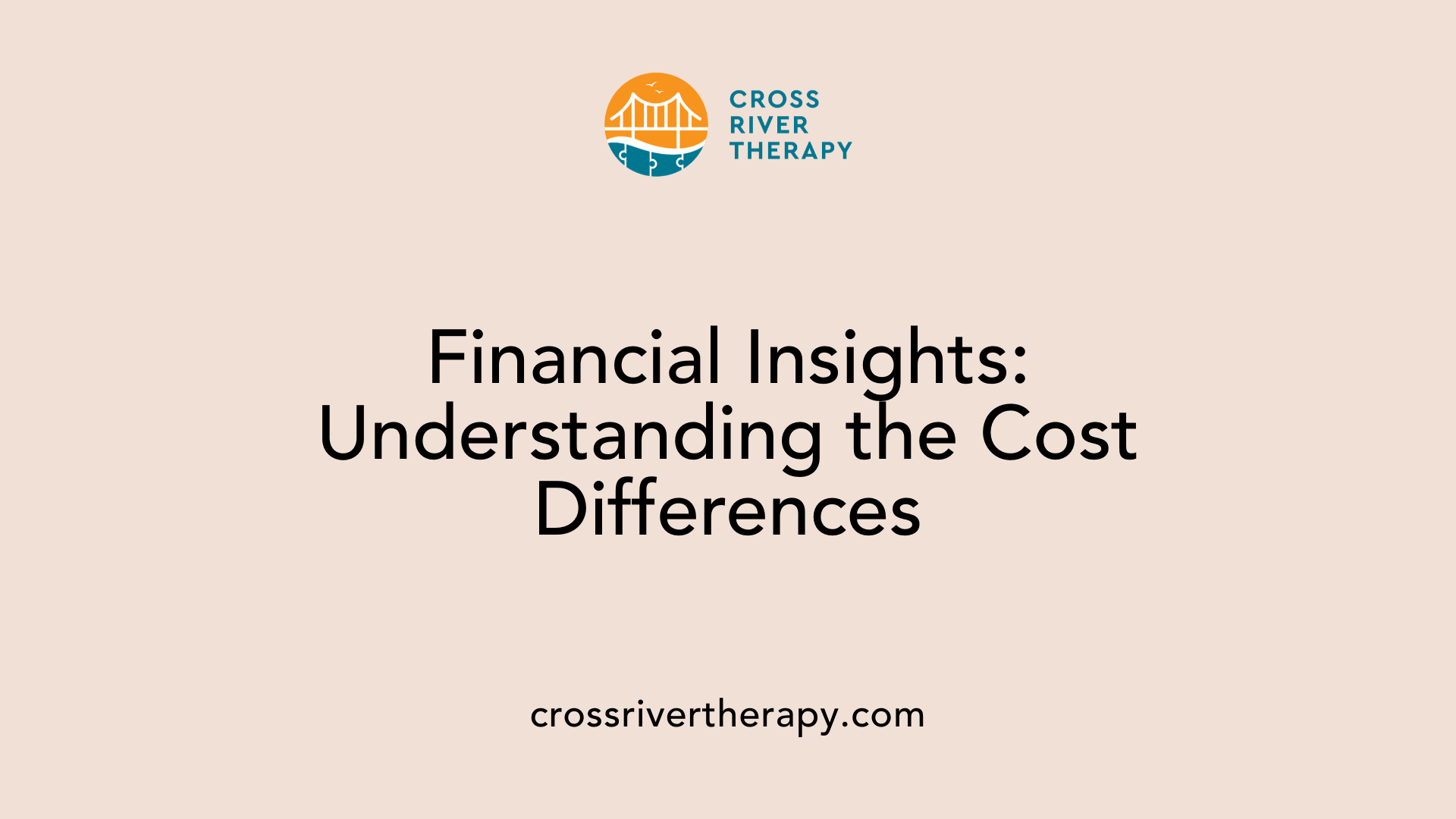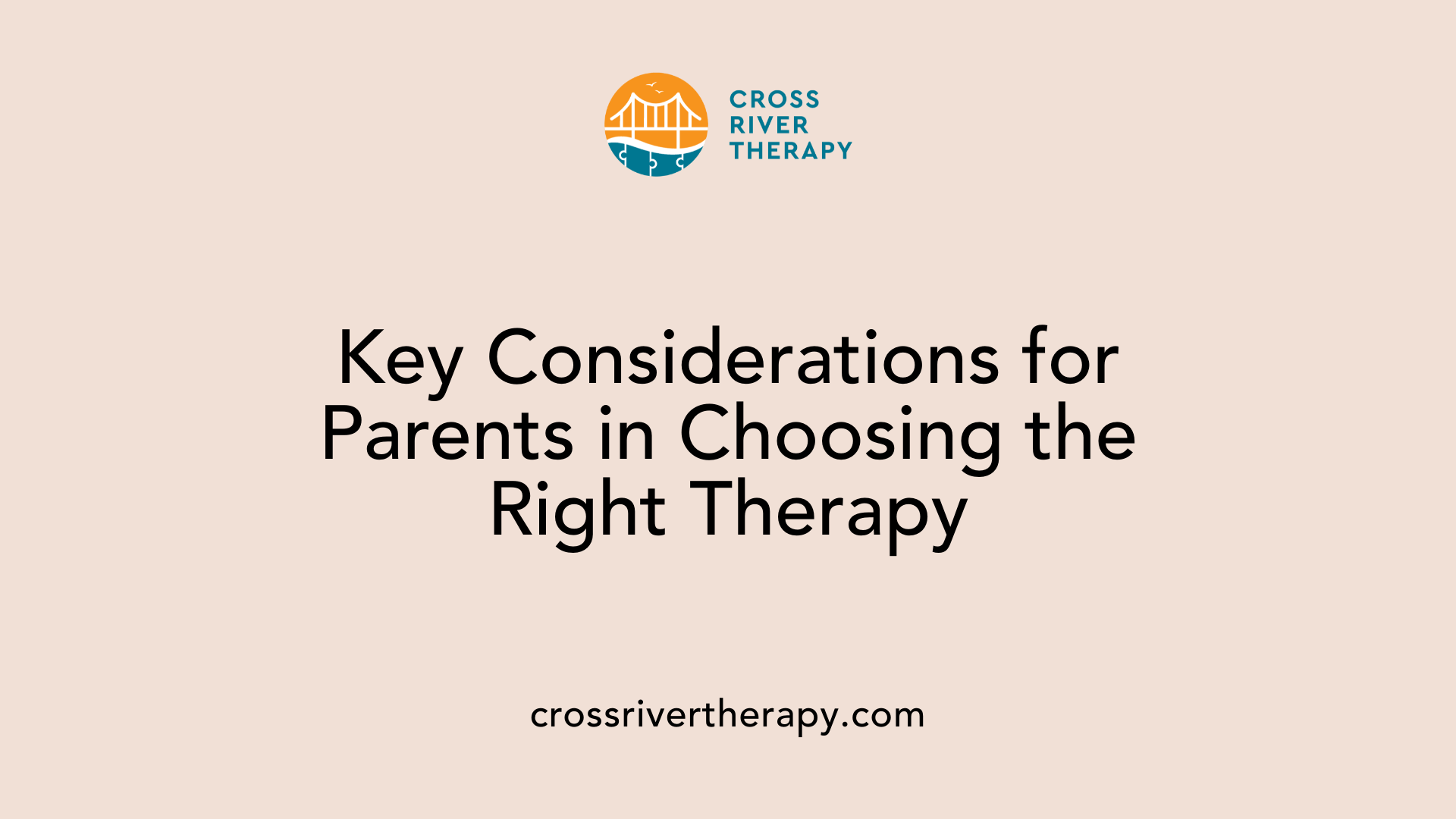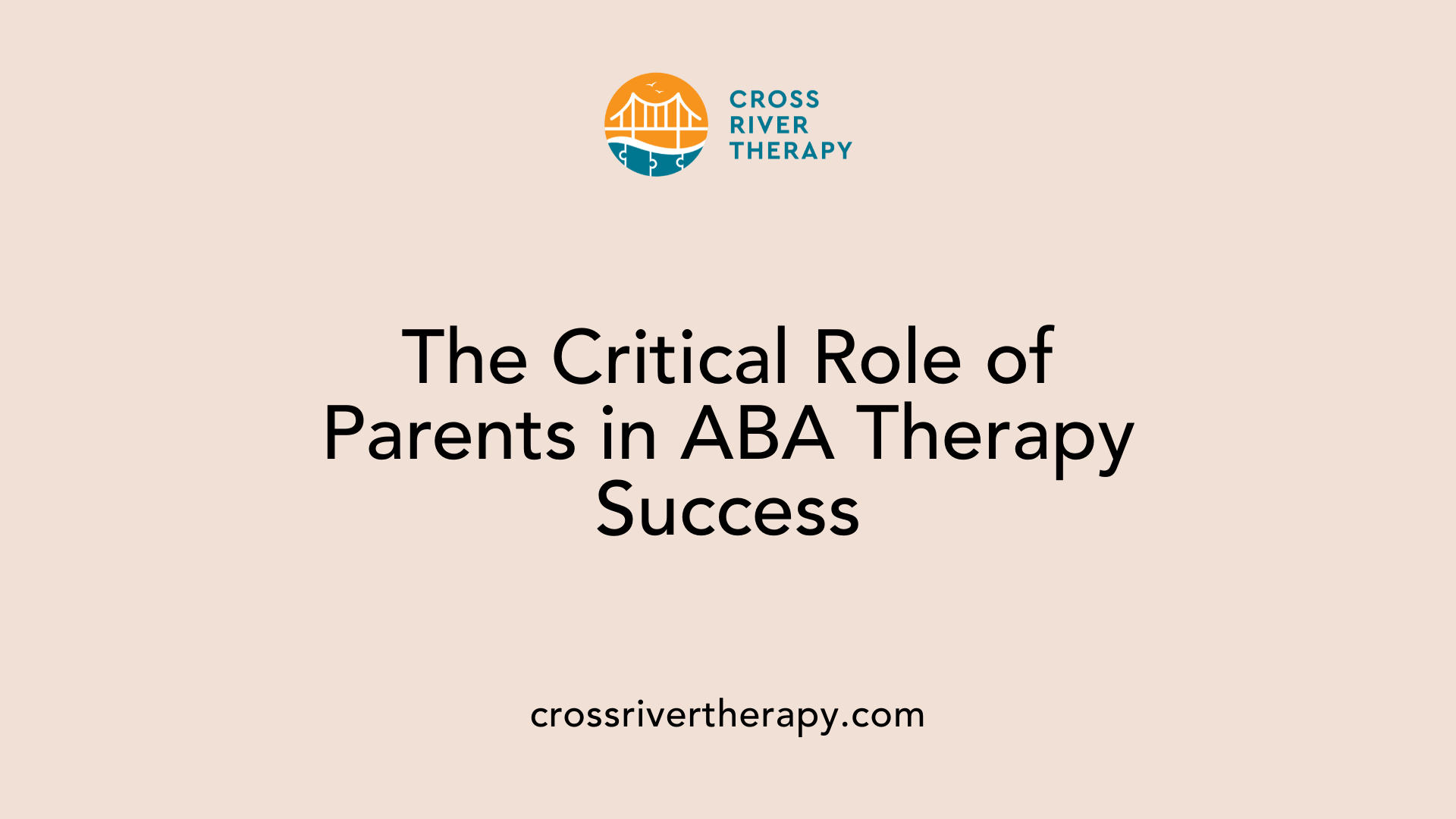The Difference Between At-Home ABA Therapy and Center-Based ABA Therapy
Comparing the Benefits and Challenges of At-Home and Center-Based ABA Therapy
Exploring Two Approaches to ABA Therapy
When it comes to helping children with autism, Applied Behavior Analysis (ABA) therapy offers two primary settings: at-home and center-based. Each approach has unique advantages and potential drawbacks, making it crucial for parents and caregivers to understand their differences. In this comprehensive guide, we delve into the pros and cons of each, offering insights to help you make an informed decision about the best therapeutic path for your child.
The Pros and Cons of At-Home and Center-Based ABA Therapy

Advantages of at-home ABA therapy
At-home ABA therapy is tailored to the child's natural environment, leveraging familiarity to enhance comfort. This setting allows for the incorporation of real-life routines, which can seamlessly integrate skill application, such as potty training or learning to brush teeth. With therapists coming to the home, parents can observe the therapy in action, making it easier for them to participate in the learning process. This involvement not only fosters a consistent learning atmosphere but also empowers caregivers to continue reinforcement of skills outside formal sessions.
Challenges of at-home ABA therapy
While there are undeniable benefits, at-home therapy can have its challenges. The surrounding environment could introduce distractions, like toys or family activities, which might impede focus and slow progress. Additionally, the lack of specialized tools that may be available in clinical settings can limit some aspects of therapy. Parents must also manage their involvement carefully, as they risk blending therapy time with everyday distractions.
Benefits of center-based ABA therapy
Center-based ABA therapy provides a structured and controlled environment designed to minimize distractions, fostering a focused learning experience. Children can benefit from regular interaction with peers, which enhances social skills and prepares them for school environments. Therapists typically have access to a variety of specialized tools and resources that can enrich the quality of therapy. This structured approach often leads to quicker acquisition of critical skills, particularly in communication and socialization.
Drawbacks of center-based ABA therapy
On the flip side, transitioning to a center can be uncomfortable for some children, especially if they are not accustomed to a new setting away from home. The session scheduling may also pose logistical challenges for families, requiring additional coordination. Furthermore, while children may receive excellent instruction in a center, generalizing learned skills back to home life can be challenging without sufficient parent training.
| Therapy Type | Advantages | Disadvantages |
|---|---|---|
| At-home ABA Therapy | Familiar environment, family involvement, real-life skill application | Potential distractions at home, limited specialized resources |
| Center-based ABA Therapy | Structured setting, peer interaction, specialized tools | Unfamiliar environment, potential discomfort, scheduling difficulties |
Cost Comparisons: In-Home vs. Center-Based ABA Therapy

How do the costs of in-home and center-based ABA therapy compare?
The costs of in-home and center-based ABA therapy can vary significantly based on several factors.
Individualized Nature of In-Home Therapy: This approach often incurs higher expenses due to the therapist traveling to the child's home. The personalized environment means that treatment is specifically tailored to the child's immediate context, which can drive costs up.
Center-Based Efficiency: Conversely, center-based programs usually benefit from shared resources and facilities. Multiple clients can participate in group sessions, allowing for a lower per-client cost. This structure can often make center-based therapy the more cost-effective option in many cases.
Influencing Factors: Geographical location, types of services provided, and the therapist's pricing structure also affect overall costs. Families might find significant cost differences between urban and rural settings.
Insurance Coverage Considerations
Insurance coverage can play a crucial role in determining how much families ultimately pay out of pocket. Many plans may cover both in-home and center-based therapies, but the extent of coverage can greatly differ. Families should thoroughly investigate their policies for specifics on coverage limits and out-of-pocket expenses for both therapy options.
Determining whether in-home or center-based therapy best fits a family’s budget involves weighing these factors alongside the unique needs and preferences of the child.
Unique Benefits of At-Home and Center-Based ABA Therapy

What are the unique benefits of at-home and center-based ABA therapy?
Both at-home and center-based ABA therapy present distinct advantages tailored to the needs of children with autism and their families.
Comfort and familiarity in at-home therapy
At-home ABA therapy capitalizes on the child's comfort within their own environment. This familiar setting helps reduce anxiety, making therapy sessions more effective. Children are able to engage in learning activities in real-life contexts—such as practicing potty training in the bathroom or learning independent living skills like brushing their teeth—which enhances their ability to generalize these skills in everyday situations.
Parental involvement advantages
A significant benefit of in-home therapy is the heightened parental involvement. Parents can observe therapy in action, learn techniques directly from the therapist, and participate actively in their child's development. This direct engagement not only facilitates consistent reinforcement of learned skills at home but also empowers families to create supportive learning environments.
Structured environment benefits in center-based therapy
Conversely, center-based ABA therapy provides a structured learning environment designed to minimize distractions and aid focus. Access to a comprehensive team of professionals—like behavior analysts and speech therapists—ensures tailored and intense interventions. This setting also promotes opportunities for socialization, allowing children to practice skills in group scenarios, which is crucial for enhancing social communication and interactions.
| Therapy Type | Unique Benefits | Considerations |
|---|---|---|
| At-Home Therapy | Comfort and familiarity, increased family involvement | Potential limitations in specialist access |
| Center-Based Therapy | Structured environment, access to comprehensive resources | Travel logistics, possible anxiety from new settings |
Individual therapy preferences should consider these factors to determine which setting best aligns with the child’s needs and the family’s situation.
Making the Right Choice: A Parent's Guide

What should parents consider when choosing between in-home and center-based ABA therapy?
When selecting a therapy option, it’s vital for parents to assess their child's unique needs and circumstances. Key factors include:
Child's Needs Assessment
- Severity of symptoms: Children with severe challenges may thrive in a familiar at-home setting.
- Socialization opportunities: Center-based therapy usually offers more interaction with peers, which can aid in social skills development.
Parental Involvement Considerations
- Direct Engagement: In-home therapy encourages parental participation, allowing caregivers to observe strategies and techniques in real time.
- Learning Support: This environment fosters a learning atmosphere where parents can replicate skills outside of therapy.
Environmental Factors in Decision-Making
- Comfort and Anxiety Levels: Familiar surroundings can ease anxiety for children, improving comfort and learning.
- Structured Learning: Conversely, the structured environment of a center minimizes distractions and helps children follow routines.
- Logistics: Transportation distance to a center and scheduling flexibility are crucial practical considerations.
By weighing these factors, parents can make an informed decision that aligns with their child’s needs and family dynamics.
Different Effectiveness: Home vs. Center-Based ABA Settings
How can the effectiveness of in-home and center-based ABA therapy differ?
The effectiveness of in-home and center-based ABA therapy can differ significantly based on several factors. Center-based therapy provides a structured environment with access to specialized professionals, such as BCBAs and speech-language pathologists. This often enhances the learning experience and facilitates faster skill acquisition due to the controlled setting and available resources.
Conversely, in-home therapy is tailored to the child's specific needs and family dynamics. It allows skills to be practiced in familiar contexts, making it easier for children to generalize their learning to daily activities such as brushing teeth or participating in family routines. In-home therapy reduces anxiety, fostering comfort and promoting learning in a less disruptive manner.
The quality of implementation is crucial and includes the competencies of the therapists and the consistency of therapy sessions. A dedicated therapist working in the child's home can better adapt to their learning style, whereas center-based therapy might require adjustments to new and sometimes overwhelming environments.
Family involvement is also essential in both settings. In-home therapy encourages parents to actively participate in sessions, easily reinforcing learned behaviors at home. This collaboration can lead to improved outcomes as skills are consistently taught and practiced in everyday life.
Ultimately, the choice between the two settings should consider the child's individual requirements and the family’s preferences to optimize therapy outcomes.
Contextual application of skills
Skills learned in a familiar environment such as home may transfer better to real-life situations. Children learn through everyday activities, which help them to internalize skills effectively.
Role of specialists and resources
Center-based programs often provide a wider range of specialized tools and access to a team of professionals that may not be available in-home. However, in-home therapy boasts the advantage of integrating learning into normal routines, promoting consistent practice.
| Therapy Type | Advantages | Limitations |
|---|---|---|
| In-Home | Personalized support, familiar environment, family involvement | Limited access to specialized tools and resources |
| Center-Based | Structured environment, access to specialists | May make generalization of skills to home more difficult |
Both settings can be effective, and often, transitioning between them can be beneficial depending on the needs of the child.
Translating Skills From Therapy to Real-Life Situations
What are the two types of ABA and how do they differ?
The two primary types of Applied Behavior Analysis (ABA) are Comprehensive ABA and Focused ABA. Comprehensive ABA covers a broad range of behaviors and skills, often utilizing methods like Early Intensive Behavioral Intervention (EIBI) to promote extensive development across cognitive, social, and emotional areas. Conversely, Focused ABA zeroes in on specific behaviors or skill deficits, using targeted techniques to accomplish short-term objectives. Each type serves distinct needs—Comprehensive ABA supports overall growth, while Focused ABA addresses immediate behavioral changes.
What challenges arise in skill generalization?
One major challenge in ABA therapy is skill generalization. Studies indicate that children often struggle to transfer skills learned in a therapy setting to their everyday lives. For instance, a child might master social skills in a structured center-based therapy environment but find it difficult to apply those skills during unstructured play at home. To combat this challenge, consistent reinforcement from family members across various settings is essential.
How does family involvement support skill reinforcement?
The role of family in reinforcing skills cannot be overstated. In both in-home and center-based therapies, caregivers can learn techniques directly from therapists. By participating actively in therapy sessions, parents and family members can help reinforce behaviors in day-to-day interactions, ensuring that what the child has learned can be applied during regular routines—like setting the table or asking for help.
What strategies enhance skill application in different settings?
To improve skill application across diverse environments, several strategies can be implemented:
- Cross-setting training: Involve therapists in both home and center-based settings to align strategies.
- Routine incorporation: Utilize daily activities to practice skills—for example, practicing communication during grocery shopping.
- Gradual transition planning: Prepare children for changes in environment by gradually introducing them to new settings or expectations.
Understanding these aspects can lead to more effective ABA therapy by ensuring skills are not only acquired but successfully applied in real life.
The Role of Environment in ABA Therapy Success
Familiar vs. Structured Environments
In-home ABA therapy and center-based ABA therapy present two distinct environments that cater to children with autism.
In-home therapy offers the comfort of a familiar setting, allowing children to engage in learning where they feel most at ease. This environment enhances the application of daily skills, such as potty training or brushing teeth, making the learning process more relatable. Parents can closely observe the therapy and participate actively, which deeply strengthens family involvement.
Conversely, center-based therapy takes place in a specialized facility, designed to minimize distractions. This structured setting promotes focused learning and social interaction with peers, essential for developing crucial communication skills and teamwork.
Impact on Anxiety and Learning Pace
The choice between an in-home or center-based setting can significantly influence a child's anxiety levels and learning speed. Home environments generally alleviate anxiety, fostering a space that incorporates family routines into therapy sessions. This personalized approach can lead to better skill generalization.
On the other hand, structured environments often lead to quicker skill acquisition as children face fewer disruptions and can rely on established routines. However, transitioning skills learned in these settings to everyday life can be challenging without proper support for parents.
Preparation for Educational Settings
Preparing children for school is a critical component of ABA therapy. Center-based programs can simulate typical school conditions, offering opportunities for group activities and social play, essential for adapting to educational settings. Meanwhile, in-home therapy allows children to integrate learning into their everyday lives, ultimately creating a consistent foundation that supports future educational experiences.
Ultimately, the effectiveness of these approaches may vary for each child, emphasizing the importance of tailoring the therapy setting to their specific needs and circumstances.
Transitioning Between Home and Center-Based ABA Therapy
Planning transitions for comfort
Navigating a switch between in-home and center-based ABA therapy can be a significant yet manageable process. The first step involves assessing the child's emotional readiness and ensuring they feel at ease with the upcoming changes. Involving parents in planning these transitions can foster a supportive environment, ultimately leading to a smoother adjustment.
Gradual familiarization strategies
To help ease the transition, families can adopt gradual familiarization strategies. Start by visiting the center before therapy begins, allowing the child to explore the new surroundings. Engage them in play activities with center staff to build familiarity and rapport. Simple first visits can help children feel less anxious about the change.
Understanding needs across settings
Recognizing that children may have varied needs in different therapy settings is crucial. While in-home therapy promotes skill generalization in familiar environments, center-based therapy offers structured social interactions and professional resources. Understanding these dynamics can help tailor the transition approach, ensuring the methods used align with the child’s specific developmental goals.
| Therapy Type | Environment Features | Key Benefits |
|---|---|---|
| In-Home ABA | Familiar, comfortable setting | Family involvement, real-life skill application |
| Center-Based ABA | Structured, professional environment | Faster skill acquisition, access to specialized tools |
Additional Information
For those interested in exploring further, researching strategies for transitioning between therapy settings can provide additional resources and insights.
Parental Involvement: A Key to Successful ABA

In-home vs Center-based Parental Engagement
Parental involvement plays a central role in the effectiveness of ABA therapy, whether it occurs in-home or at a center. In-home therapy allows parents to observe therapy sessions directly. They can participate actively, witnessing firsthand how techniques are applied, such as potty training in a familiar environment. This direct engagement reinforces learning and builds parental confidence in supporting their child’s development.
Conversely, center-based therapy often requires families to schedule separate meetings to discuss progress, creating a slight gap in continuous direct involvement. While this setting provides a team of professionals supporting the child, it may limit spontaneous input from parents that occurs seamlessly in an at-home approach.
Role of Parents in Skill Reinforcement
Regardless of the setting, parents are pivotal in reinforcing skills learned during therapy. In-home therapy naturally integrates lessons into daily routines; parents can practice techniques, such as brushing teeth, immediately after they are taught. This reinforces learning by embedding skills into real-life contexts where children will eventually use them most.
Creating Consistent Learning Environments
Both therapy approaches emphasize the necessity for consistency, yet they do so in different ways. At-home therapy allows for a personalized routine, with parents actively involved in teaching independence in a familiar setting. Center-based therapy, on the other hand, provides a structured and controlled environment that reduces distractions and enforces learning routines, essential for cultivating skills that are transferable to social or school settings.
Engaging parents in both types of therapy sets a firm foundation for their child’s progress, as it fosters a supportive learning environment that extends beyond therapy sessions.
A Balanced Approach to Choosing ABA Therapy
Choosing between at-home and center-based ABA therapy is not a decision to take lightly. Each has unique strengths and considerations that can profoundly affect a child's development and family dynamics. By understanding the differences, costs, benefits, and potential challenges associated with each setting, parents can better tailor their decisions to their child's specific needs and circumstances. Ultimately, the right choice fosters a nurturing and effective learning environment, allowing children to thrive and maximize their potential.
References
- ABA Therapy In-Home vs At a Center: 5 Key Differences
- In-Home vs. Center-Based ABA Therapy | Autism Resources
- Choosing Between Home-Based and Center-Based ABA
- Home-Based Vs. Center-Based Services for Autism - Forbes
- NONE Definition & Meaning - Merriam-Webster
- NONE | definition in the Cambridge English Dictionary
- none - American Heritage Dictionary Entry
- NONE Definition & Meaning - Merriam-Webster
- NONE | definition in the Cambridge English Dictionary



